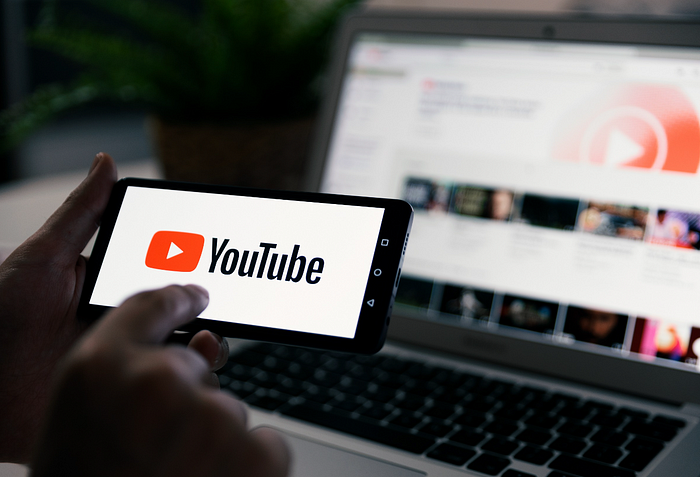As digital content creation continues to grow, many creators are weighing their options between different platforms to determine where they can maximize their earnings.
Two popular choices are Medium and YouTube.
Each platform has its unique strengths and weaknesses, and understanding these can help you make an informed decision about where to invest your time and creativity.
In this article, we’ll explore the monetization potential of Medium and YouTube, comparing their features, audience reach, and revenue models.

Part 1: Understanding the Platforms
Medium: The Hub for Writers
Medium is a platform designed for writers and readers who appreciate high-quality, long-form content. It attracts professionals, hobbyists, and enthusiasts who enjoy reading and writing about diverse topics ranging from technology and business to personal development and storytelling.
Medium offers a clean, distraction-free reading experience, making it an excellent choice for those who prefer the written word. The platform is particularly popular among individuals looking to share their expertise or personal experiences through detailed articles.
YouTube: The King of Video Content
YouTube, on the other hand, is the world’s largest video-sharing platform. It caters to a massive global audience with diverse interests, including vlogs, tutorials, music videos, gaming, and educational content. YouTube’s visual and interactive nature makes it highly engaging, especially for younger audiences who prefer video over text.
Creators on YouTube can leverage the platform’s extensive reach to build a substantial following. However, creating high-quality video content typically requires more resources, such as equipment, editing software, and production time.
Audience Demographics
Medium boasts around 100 million monthly active readers, primarily from the United States, with a growing international presence. The audience tends to be older and more professional, making it ideal for in-depth, thoughtful content.
YouTube, with over 2 billion logged-in monthly active users, has a diverse global audience. It is especially popular among the 18-34 age group, but it also attracts viewers of all ages and backgrounds.
Part 2: Monetization Models
Medium Partner Program
Medium offers the Medium Partner Program (MPP), allowing writers to earn money based on member engagement. Here’s how it works:
- Earnings: Writers are paid based on the number of “claps” (Medium’s version of likes) their articles receive from Medium members. Each member’s subscription fee is distributed among the articles they engage with most.
- Subscription Fee: Medium membership costs $5 per month or $50 per year, giving subscribers access to exclusive content.
- Revenue Potential: The top writers can earn thousands of dollars per month, but many earn less than $100 monthly. Earnings vary widely depending on the quality and popularity of the content.
YouTube Partner Program
YouTube provides several monetization options through the YouTube Partner Program (YPP):
- Ad Revenue: Creators earn money from ads displayed on their videos. The typical revenue split is 55% to the creator and 45% to YouTube.
- Channel Memberships: Viewers can join channels as members, paying a monthly fee for exclusive perks. Membership prices range from $0.99 to $100 per month.
- Super Chats: During live streams, viewers can pay to have their messages highlighted. Creators typically keep 70% of the revenue.
- Merchandise Shelf: Creators can sell branded merchandise directly on their channel.
- YouTube Premium Revenue: Creators earn a share of the subscription fee from YouTube Premium subscribers who watch their content.
The earnings potential on YouTube can be substantial, with top creators making millions annually. However, average earnings vary greatly depending on factors like subscriber count, view count, and engagement levels.

Part 3: Engagement and Community Building
Medium: Building a Loyal Readership
Medium’s engagement model revolves around fostering a loyal readership. Writers can build a following by consistently publishing high-quality content and engaging with readers through comments and responses. The platform’s recommendation algorithms also help promote articles to interested readers, increasing visibility and potential earnings.
Medium’s community tends to be niche-focused, allowing writers to establish themselves as experts in specific areas. This can lead to opportunities for paid writing gigs, collaborations, and even book deals.
YouTube: Fostering Active Interaction
YouTube’s engagement model is highly interactive, allowing creators to build a strong connection with their audience through video content. Viewers can like, comment, share, and subscribe to channels, providing immediate feedback and fostering a sense of community.
Live streaming is a powerful feature on YouTube, enabling real-time interaction with viewers through Super Chats and live comments. This direct engagement can significantly boost a creator’s popularity and earnings.
YouTube’s recommendation algorithms are known for driving massive amounts of traffic to popular videos, helping creators rapidly grow their audience. However, competition is fierce, and maintaining viewer interest requires consistent content production and quality.
Part 4: Costs and Resources
Medium: Low Barrier to Entry
One of Medium’s advantages is its low barrier to entry. Writers only need a computer and an internet connection to start publishing. The platform provides a simple, user-friendly text editor, making it easy for anyone to write and share their stories.
While the initial investment is minimal, success on Medium requires time and effort to produce high-quality content and engage with readers. Writers must also be adept at self-promotion to attract a broader audience.
YouTube: Higher Production Costs
Creating content for YouTube generally involves higher production costs. Aspiring YouTubers need equipment like cameras, microphones, lighting, and video editing software. Additionally, producing engaging video content often requires more time and technical skills than writing.
Despite the higher costs, the potential rewards on YouTube can be significant. Successful creators often reinvest their earnings into improving their production quality, which can further boost their channel’s growth and revenue.
Balancing Costs and Earnings
Both platforms offer unique opportunities and challenges. Medium is ideal for those who prefer writing and have limited resources, while YouTube is better suited for individuals willing to invest in video production and engage with a broader, more diverse audience.

Part 5: Long-Term Potential and Trends
Medium: Growing Demand for Quality Content
As the demand for quality written content continues to grow, Medium remains a valuable platform for writers. The rise of content marketing and the increasing importance of thought leadership in various industries provide ongoing opportunities for Medium writers to monetize their expertise.
Medium’s subscription model also incentivizes high-quality content, ensuring that readers get value for their money. This trend is likely to continue, making Medium a viable long-term option for dedicated writers.
YouTube: The Power of Video
Video content is becoming increasingly dominant in the digital landscape. With the rise of platforms like TikTok and the continued popularity of YouTube, video remains a powerful medium for storytelling, education, and entertainment.
YouTube’s adaptability and constant innovation ensure its relevance in the coming years. Features like live streaming, community posts, and Stories provide creators with diverse ways to engage their audience and monetize their content.
Comparison Table: Medium vs. YouTube
| Feature | Medium | YouTube |
|---|---|---|
| Monthly Active Users | ~100 million | >2 billion |
| Audience Demographics | Professionals, writers, diverse interests | Extremely diverse, popular among 18-34 age group |
| Geographic Distribution | Mainly US, growing international readership | Global, significant users in the US, India, Brazil, Japan |
| Payment Model | Medium Partner Program | YouTube Partner Program |
| Earnings | Varies widely; top writers can earn thousands/month | Varies widely; top creators can earn millions/year |
| Subscription Fee | $5/month or $50/year for Medium membership | Free to use; YouTube Premium for ad-free experience ($11.99/month) |
| Revenue Streams | Member engagement (claps) | Ads, memberships, Super Chats, merchandise, Premium revenue |
| Revenue Split | Based on member engagement | Ads: 55% to creator, 45% to YouTube |

Future Opportunities
Both Medium and YouTube offer significant long-term potential for creators.
Medium is perfect for those who excel in writing and seek to build a niche audience, while YouTube is ideal for visually-driven content creators aiming for broad reach and engagement.
Choosing between Medium and YouTube depends on your strengths, resources, and content preferences.
By knowing and understanding the unique features and monetization models of each platform, you can make an informed decision that aligns with your goals and maximizes your earning potential.